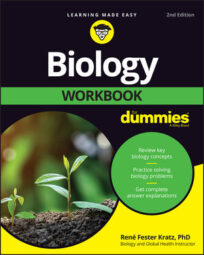Biological evolution refers to the change of living things over time. Charles Darwin introduced the world to this concept in his 1859 work, On the Origin of Species. In this book, Darwin proposed that living things descend from their ancestors but that they can change over time.
Darwin concluded that biological evolution occurs as a result of natural selection, which is the theory that, in any given generation, some individuals are more likely to survive and reproduce than others.
The theory of natural selection is often referred to as “survival of the fittest.” In biological terms, fitness has nothing to do with how often you pump iron or go to spin class. Biological fitness is basically your ability to produce offspring. So survival of the fittest really refers to the passing on of those traits that enable individuals to survive and successfully reproduce.
The figure illustrates natural selection in action. If a visual predator, such as an eagle, is cruising for its lunch, it will most likely eat the animals it can see most easily. If the eagle’s prey is mice, which can be white or dark, and the mice live in the forest on dark-colored soil, the eagle will see the white mice more easily.
Over time, if the eagles in the area keep eating more white mice than dark mice, more dark mice will reproduce. Dark mice have genes that specify dark-colored fur, so their offspring will also have dark fur. If the eagles continue to prey upon mice in the area, the population of mice in the forest will gradually begin to have more dark-colored individuals than white individuals.
![[Credit: Illustration by Kathryn Born, M.A]](https://www.dummies.com/wp-content/uploads/362617.image0.jpg)
In this example, predation by the eagle is the selection pressure — an environmental factor that causes some organisms to survive and others not to survive.
For natural selection to occur in a population, several conditions must be met:
Individuals in the population must produce more offspring than can survive.
Those individuals must have different characteristics.
Some characteristics must be passed on from parents to offspring.
Selective pressure favors organisms with the best-suited characteristics for their environment.
If these four conditions are met, the new generation of individuals will be different from the original generation in the frequency and distribution of traits, which is pretty much the definition of biological evolution.
Practice questions 1 – 3, refer to the following story:
A classic example of how natural selection can change a population occurred in Britain during the Industrial Revolution. Peppered moths in England are eaten by birds, which hunt by sight. Prior to the industrialization of England, a light-colored form of the peppered moth was more abundant, even near cities.
Immediately following the rise in industry, which spread coal soot over urban areas, a dark-colored form of the peppered moth became more abundant in urban areas, while light-colored moths remained more abundant in the countryside. After air-pollution reforms took effect in England and the coal dust was gone, the light-colored form of the moth became more abundant in urban areas.
What was the selection pressure acting on the moths?
How did the definition of fitness change for the moths in urban areas before and after the Industrial Revolution?
How would the story be different if wing color in moths wasn’t an inherited characteristic (for example, if wing color were determined randomly at birth based on environmental temperature)?
The following are answers to the practice questions presented in this chapter.
The answer is predation by birds.
Before the Industrial Revolution, highest fitness in urban areas occurred in light-colored moths. Just after the Industrial Revolution, the highest fitness occurred in dark-colored moths. After clean-air reforms led to a cleaner environment, higher fitness again occurred in light-colored moths.
You’d predict that the frequency of moth colors wouldn’t change despite the changing landscape (assuming no temperature change was occurring). The same numbers of light- and dark-colored moths would be seen in each generation, randomly or changing in response to changes in temperature.

